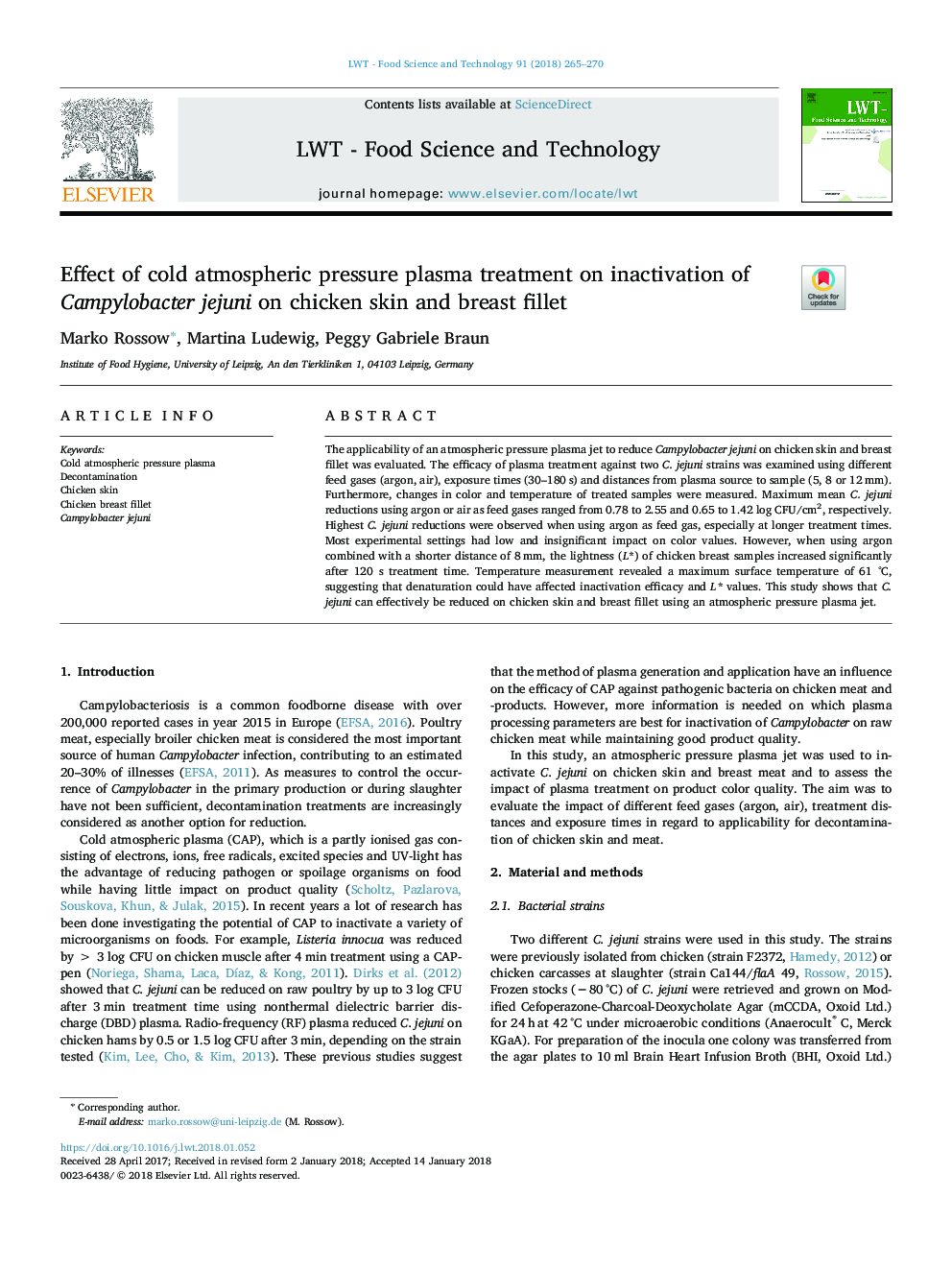| Article ID | Journal | Published Year | Pages | File Type |
|---|---|---|---|---|
| 8891683 | LWT - Food Science and Technology | 2018 | 6 Pages |
Abstract
The applicability of an atmospheric pressure plasma jet to reduce Campylobacter jejuni on chicken skin and breast fillet was evaluated. The efficacy of plasma treatment against two C. jejuni strains was examined using different feed gases (argon, air), exposure times (30-180â¯s) and distances from plasma source to sample (5, 8 or 12â¯mm). Furthermore, changes in color and temperature of treated samples were measured. Maximum mean C. jejuni reductions using argon or air as feed gases ranged from 0.78 to 2.55 and 0.65 to 1.42 log CFU/cm2, respectively. Highest C. jejuni reductions were observed when using argon as feed gas, especially at longer treatment times. Most experimental settings had low and insignificant impact on color values. However, when using argon combined with a shorter distance of 8â¯mm, the lightness (L*) of chicken breast samples increased significantly after 120 s treatment time. Temperature measurement revealed a maximum surface temperature of 61 °C, suggesting that denaturation could have affected inactivation efficacy and L* values. This study shows that C. jejuni can effectively be reduced on chicken skin and breast fillet using an atmospheric pressure plasma jet.
Related Topics
Life Sciences
Agricultural and Biological Sciences
Food Science
Authors
Marko Rossow, Martina Ludewig, Peggy Gabriele Braun,
